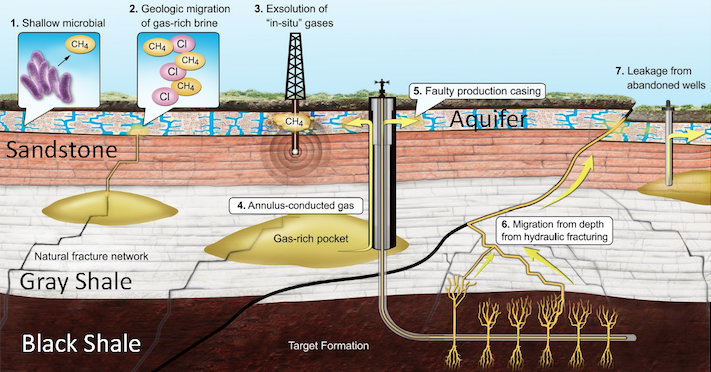
A diagram of seven scenarios that may account for the presence of elevated methane gas levels in shallow aquifers. (Credit: Darrah et al.)
A new study shows that methane leaks in drinking water wells around shale-gas wells in Pennsylvania and Texas come from failures in the integrity of gas well construction, and not from the drilling or hydraulic fracturing.
The authors developed a new technique to look for the concentration of noble-gas isotopes in drinking-water samples to determine the methane’s origin: methane leaking from the well will have a 1,000 times less helium and neon isotopes than methane slowly leaking naturally from the underground.
This research could help people determine the origin of the gases contaminating their drinking water.
Original research paper published in PNAS on September 15, 2014.
Names and affiliations of selected authors


